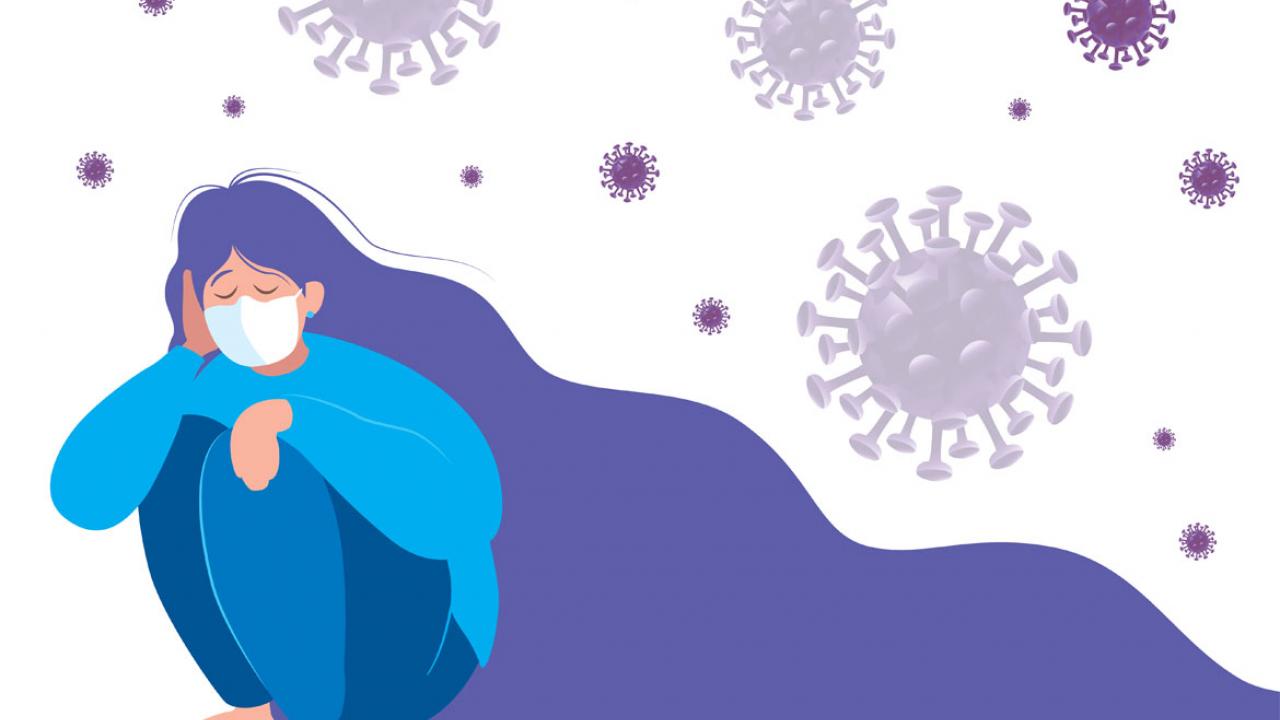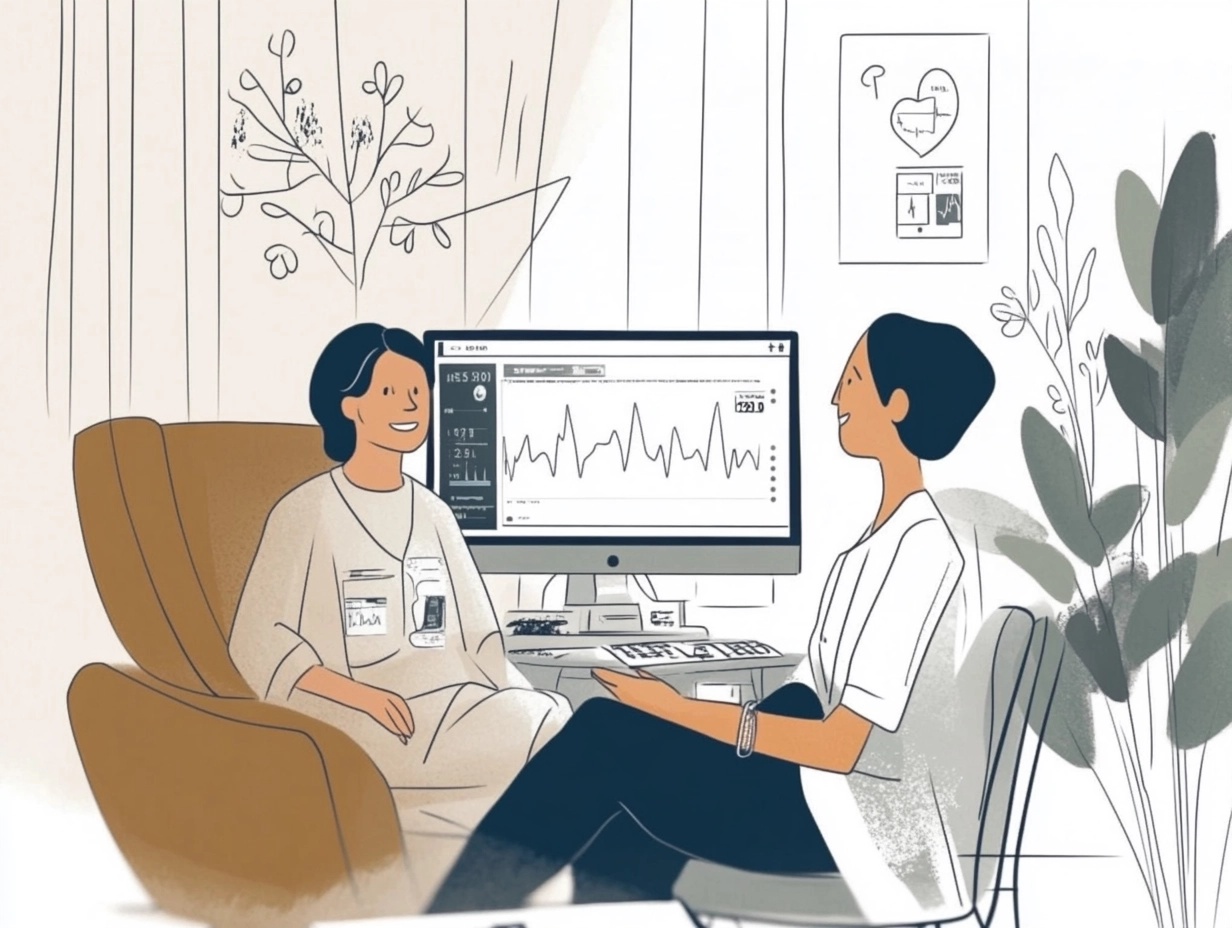There is still a lot we don’t know about Long COVID, but one thing that seems clear is that it can be a tough virus to recover from. Many people report feeling “stuck” in their recovery, unable to get back to their pre-COVID level of activity and wellness. This can be extremely frustrating and disheartening.

But there may be some help on the horizon in the form of heart rate variability biofeedback. This therapy uses guided breathwork to help individuals activate their nervous system’s parasympathetic (a.k.a. rest-and-recover) mode by increasing their heart rate variability. The goal is to help train the autonomic nervous system (ANS) so that it functions more optimally, which in turn could help long COVID patients feel better and improve their overall health. There is still research being done on this front, but early results are promising and worth exploring for those struggling with long COVID.
What is heart rate variability?
Heart rate variability (HRV) provides insight into heart rhythm and its fluctuations due to the influence of the ANS. By measuring beat-to-beat changes in heart rate, HRV can be used to assess heart rhythm regularity. Beyond indicating heart rate regulation, HRV can help identify health risk and generally serves as a reliable marker of autonomic nervous system regulation. HRV can be used to gain an understanding of one’s overall physical fitness, identify signs of illness, and warn of physiological stress.

HRV biofeedback to help with long COVID symptoms
Heart rate variability (HRV) biofeedback is a technique that involves monitoring and modifying one’s heart rate in order to improve physical and emotional well-being. In individuals with long COVID symptoms, HRV biofeedback can help reduce stress and anxiety, improve sleep quality, and regulate the autonomic nervous system. By providing feedback on the body’s physiological responses to stress, HRV biofeedback can help individuals with long COVID symptoms to better manage their symptoms and improve their overall health and well-being.
The ongoing challenges of long COVID symptoms have led to a greater understanding of HRV biofeedback and its potential benefit for those who suffer from the long-lasting effects of COVID-19. HRV biofeedback is a powerful tool used to help regulate the autonomic nervous system, which is often impacted by the virus. HRV biofeedback can help manage physiological symptoms related to stress, anxiety, and physical pain that have been caused by long COVID.
Through HRV biofeedback, an individual can influence their own heart rate and autonomic nervous system activity in order to restore balance. By utilizing this type of self-regulation therapy, those affected by post-COVID issues may find relief from their symptoms prior to any medical intervention.

HRV biofeedback can help mitigate one’s fight-or-flight response and promote a rest-and-recover state of mind, ultimately helping you build resilience and become more flexible in challenging situations. HRV also reveals vital information about health that can be used to inform treatment strategies and lifestyle modifications. Over time, HRV biofeedback can have a significant impact on long COVID symptoms by helping to shift the body into self-healing mode more effectively.
Benefits of HRV biofeedback for long COVID recovery
HRV biofeedback is a unique and powerful approach to self-regulation that helps people achieve better balance over time. Many have experienced impressive success from HRV biofeedback, with notable improvements in physical and mental health, job performance, and other aspects of their lives.
HRV biofeedback can help strengthen personal resilience, enhance adaptability, increase energy levels and focus, reduce anxiety, foster sound sleep patterns, and support healthy emotions. Its flexible method allows users to tailor their HRV biofeedback sessions to match the changing nature of their needs. As a result, HRV biofeedback is an increasingly popular tool for optimal health because it allows individuals to significantly enhance their well-being in a flexible, accessible manner.
Tips on how to get started with HRV biofeedback
HRV biofeedback is an effective way to get in tune with your body and heart. To start practicing HRV biofeedback, you should invest in a HRV wearable device such as the Lief, which measures the electrical signals of your heart with clinical-grade accuracy using an ECG patch. With the help of real-time continuous HRV tracking, you can establish your HRV baseline and then track it over time.
Afterwards, you can integrate HRV biofeedback sessions into your daily routine and use other wellness strategies and exercises to help control stress levels and improve overall wellbeing. With Lief, you’ll have access to reliable biomarker data and consistent feedback in order to make more informed decisions about your health.
Overall, people can use HRV biofeedback to help in their recovery of long COVID symptoms. This technique is perhaps the most promising one for addressing many of the current problems associated with this virus. It must be noted that like any other form of therapy or treatment, you should consult with a qualified medical professional before taking advantage of this method.

With the right guidance and commitment, HRV biofeedback has significantly helped many people with long COVID symptoms. It enables them to better manage their symptoms and understand how behavior change can improve their outcomes. With consistent practice, HRV biofeedback can have transformative effects on your mental and physical health. Try it for yourself with the help of Lief and find out firsthand how this revolutionary tool can help you improve both your short and long-term well-being.





Leave a Reply
You must be logged in to post a comment.